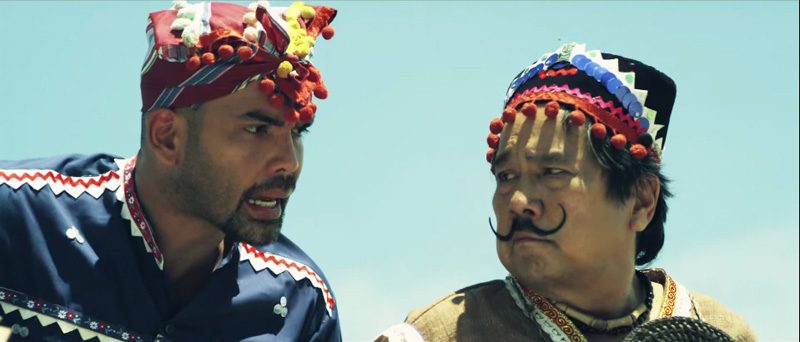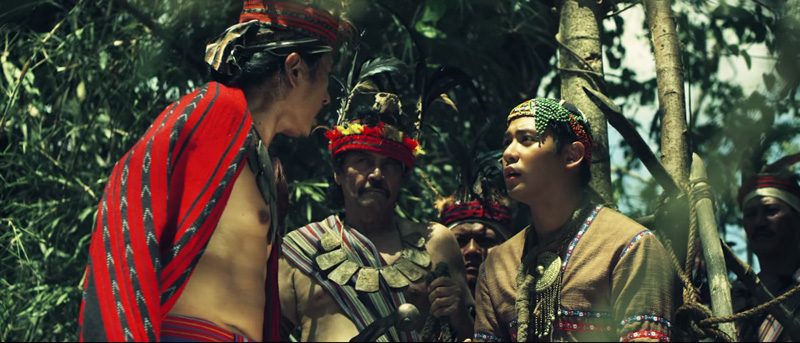SUMMARY
This is AI generated summarization, which may have errors. For context, always refer to the full article.

Jun Urbano’s Ibong Adarna: The Pinoy Adventure is not exactly a faithful adaptation of the famous story about three princes and their quest to catch the mythical bird that has the power to cure any illness.
Despite that, the plot remains largely unchanged. There is still a king who ends up severely ill, a greedy monarch-in-waiting thirsting for the throne, and a prince, who, with his bravery and goodness, will be able to find the magical bird and cure the king.
It does away with a lot of the original story’s characters and side plots, and replaces them with its own, in an effort, I guess, to keep the story both fresh and familiar. Sultan Mabait (Joel Torre) falls ill after Datu Maimbot (Leo Martinez), his evil, ambitious brother who has intentions to seize the throne, recruits a witch (Lilia Cuntapay) to curse him.
The cure to the Sultan’s illness is of course the Adarna bird, which Prinsipe Sigasig (Rocco Nacino) has predictably volunteered to fetch from its nest located in a faraway land.
Accompanying the prince is the Datu and his sidekick, Sipsipayo (Benjie Paras), who are only in it for the rumored treasures around the Adarna bird’s nest.
Charmingly out of character
Most of Ibong Adarna’s charms come from its humor. Martinez and Paras portray their characters to be more clownish than villainous. They fumble and argue, exchanging words of wisdom and nonsense, all for comedic effect. Even Cuntapay is given respite from her witching duties with hilariously flirtatious moments with Martinez.
Probably the most endearing thing in the film is the characterization of Sigasig. Instead of being a strapping heroic stud, Nacino portrays him as a good-natured simpleton who opts to be preoccupied with village maidens than learning how to read.
In the heat of his adventure, he fails in combat, becomes a prisoner of a vicious tribe, only to be rescued by a prepubescent boy who jokingly plays the role of the prince’s guardian and protector.
Sigasig is curiously similar to Juan Tamad, the character popularized by Manuel Conde, Urbano’s father, in classic films such as Juan Tamad Goes to Congress, and Juan Tamad Goes to Society, and revived by Urbano himself in Juan Tamad at Mr. Shooli: Mongolian Barbecue.
Sigasig goes about his adventure with luck as his more trustworthy weapon, rather than brute strength, the same way Juan Tamad goes about his everyday chores and life in general.

Pageantry and spectacle
Urbano’s ambitions are crystal clear. Ibong Adarna is meant to be children’s fare. It is supposed to be light and funny. Its darker moments are managed with jokes and pageantry. There’s nary an attempt to overreach or be subtle with more adult themes, since there are absolutely none.
The movie is all about fun and fireworks. It’s all about spectacle and eye candy. The more it looks like a page out of an illustrated storybook, the better. Ibong Adarna is therefore heavily reliant on CG.
Urbano could have gone old-school, relying on practical effects and his audience’s imagination to produce the same effect. However, it seems that is too much to expect from a movie whose goal is to entertain and maybe tangentially educate children with ordinary life lessons.
At its best, Ibong Adarna’s visual design is inspired. For example, the fearsome giant the tribesmen feed with their prisoners is ironically fashioned after Kuhol, Urbano’s diminutive sidekick in his television show Mongolian Barbecue. At its worst, its spectacles are stale and derivative.
Timeless and consistent
With Ibong Adarna, Urbano endeavors to enchant a new generation with the timeless fable. The modifications he introduces are mostly cosmetic, since there is absolutely no effort to update its mores and norms. The spirit remains almost the same.

It seems that Urbano believes that there is a certain level of consistency in how children see the world, that despite the constantly changing politics and philosophies of the world, children would still appreciate the utter simplicity and frankness of a morally-grounded fairy tale.
At the end of the day, it would be the children, the film’s target market, who would determine if Urbano’s belief is accurate. There’s just a huge part of me thinking that the children who would have enjoyed and learned from Vicente Salumbides’ Ibong Adarna had they been born before its 1941 release date are now out and about learning about life from Facebook and online games instead of from Ibong Adarna via Urbano’s idealistic impressions. – Rappler.com
 Francis Joseph Cruz litigates for a living and writes about cinema for fun. The first Filipino movie he saw in the theaters was Carlo J. Caparas’ ‘Tirad Pass.’ Since then, he’s been on a mission to find better memories with Philippine cinema.
Francis Joseph Cruz litigates for a living and writes about cinema for fun. The first Filipino movie he saw in the theaters was Carlo J. Caparas’ ‘Tirad Pass.’ Since then, he’s been on a mission to find better memories with Philippine cinema.
Add a comment
How does this make you feel?
There are no comments yet. Add your comment to start the conversation.